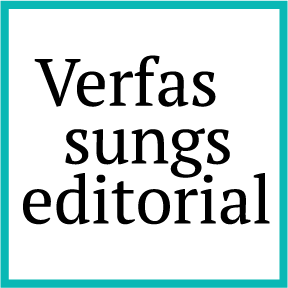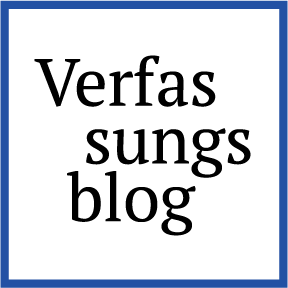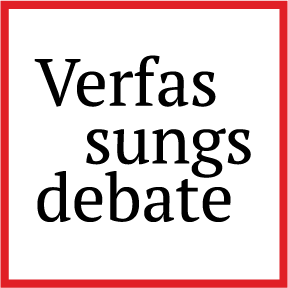The Antagonistic Unity of Copyright and Freedom of the Arts
Advocate General Emiliou’s Opinion in Pelham
On 17 June 2025, Advocate General Emiliou delivered his opinion in the second referral of the German Federal Court of Justice (BGH) to the CJEU in the case “Pelham” – also known as “Metall auf Metall” (Case C-590/23). He defines “pastiche” – currently the most controversial concept of European copyright law – and makes a fundamental statement on EU copyright law and its relationship to freedom of the arts as guaranteed by Art. 13 CFR. The InfoSoc Directive, which is at the heart of EU copyright law, is too restrictive with regard to the artistic use of copyright-protected works and therefore not compatible with the Charter’s freedom of the arts.
Emiliou’s opinion is a breakthrough. It grounds copyright in freedom of the arts and paves the way for a new perspective on the relationship between copyright and artistic freedom. They are antagonistic as well as linked – a unity of opposites. In specific cases, the two are opposed to each other. An artist wants to use the copyright protected work of another artist, citing artistic freedom. On a general level, this antagonism is sublated by their shared objective to serve artistic creation.
Defining pastiche
More than 20 years ago, Moses Pelham recorded the song “Nur mir” with Sabrina Setlur, sampling about two seconds from Kraftwerk’s track “Metall auf Metall”. He did not obtain a license, nor did he include a feature note. Whether this sampling constitutes a copyright infringement has been a matter for German and European Courts ever since. The outcome of the proceeding before the national court will ultimately depend on whether the sample can be qualified as a “pastiche” under § 51a German Copyright Act (UrhG).
But what does “pastiche” mean? There is no common understanding of the concept, yet. German courts have understood it to imply a referential character to an existing work (BGH, para 27). Since the InfoSoc Directive’s Art. 5 (3) (k) lacks case law on “pastiche”, the BGH referred the question to the CJEU. The answer of the court will affect more than sampling – it will shape the ongoing debate on copyright and AI.
AG Emiliou concludes that a “pastiche” under the directive must meet three conditions: an “artistic creation” must (1) evoke an existing work by adopting its distinctive “aesthetic language” while it is (2) still noticeably different from the copyright protected source used and (3) recognisable as an imitation (para 133). Hence, there are actually four conditions, as only “artistic creations” may qualify as pastiche. Material “outside the artistic domain” (para 33) – as is often the case with memes and GIFs – cannot qualify. According to Emiliou, the concept of pastiche gives little leeway for the creative reuse of copyright protected content. Samples – such as Pelham’s – and other borrowings without “artistic, overt stylistic imitation” shall not be covered by it (para 83). The definition is broad only insofar as – according to Emiliou – the pastiche does not presuppose a specific purpose such as “humour, stylistic imitation or tribute” (para 17, 62, 133). This distinction differs from the CJEU’s interpretation of “parody”, which requires “humour or mockery” (Deckmyn Case C‑201/13). Unlike parody, “pastiche” does not depend on the user’s intention. Still, it cannot serve as a catch-all clause for all types of reuse.
AG Emiliou rightly argues that the concept of “pastiche” can only be understood narrowly – any other interpretation would be contrary to the intention of the Union legislator and amount to an interpretation contra legem. The CJEU cannot “distort” an existing exception and limitation in the light of freedom of expression, to permit uses it never intended (para 79). A broad interpretation would effectively create a new exception and limitation; the exhaustive list of exceptions and limitations in Art. 5 para. 3 of the InfoSoc Directive, however, leaves no room for that (para 79). The CJEU emphasized this in Pelham’s first preliminary ruling, declaring a German provision which restricted the exploitation rights beyond the written exceptions and limitations of the directive, to be incompatible with EU law (C-476/17): the so-called “free use” (“freie Benutzung” under the old version of §24 UrhG).
Despite its narrow scope, the definition highlights a general point: The second requirement (“aesthetic language”) shows that applying artistic freedom and copyright law involves aesthetic judgment, even if one follows the dogma that lawyers should not judge the quality of artistic work. The Advocate General makes this point in footnote 19 when he states: “Artistic merits are, by contrast, irrelevant. Indeed, judges cannot decide what is ‘good’ or ‘bad’ art (for that is an inherently subjective question).” This common observation is correct but often misunderstood. Lawyers are not supposed to judge whether art is good or beautiful art. But deciding whether an aesthetic language is adopted still requires an aesthetic judgment. Because the decision as to whether a work uses the aesthetic language of another work is an aesthetic one – just not one in regard to beauty or value but to imitation and difference.
Relating freedom of the arts and copyright
The meaning of “pastiche” is only the starting point for a deeper discussion. The narrow definition prevents a fair balance between protecting existing works and enabling new artistic creation. AG Emiliou develops this fact by reflecting on the relationship between copyright and artistic freedom. Copyright supports artists by protecting their exploitation rights and their moral bond to their works. But it also restricts them: they cannot freely use others’ works. Due to his narrow interpretation, the concept of pastiche cannot balance the conflict of copyright versus artistic freedom. AG Emiliou distinguishes related rights (phonograms, films, broadcasts), where such a balance is “manifestly wrong”, from authors’ rights, where it aligns with the CFR but still leaves room for improvement (para 111).
The reason for this differentiation is the fact that authors’ rights and related rights have a different normative value in copyright law. The latter serve only as a supporting role. AG Emiliou therefore reads the tenth recital of the InfoSoc Directive, which is couched in regrettably economic language, as an indirect promotion of artistic freedom (para 28). Regarding related rights, the Advocate General proposes two ways to address the contradiction between the InfoSoc Directive and the Charter of Fundamental Rights (para 112 et seq.): First, the Court could interpret a de minimis-threshold into the concept of reproduction, thereby excluding economically irrelevant, very short uses – like Pelham’s – from copyright (para 124). Alternatively, the Union legislator could act. Emiliou proposes two changes regarding related rights: Either exclude short excerpts from the scope of reproduction rights or introduce a specific exception for the reuse of protected material – such as extracts from phonograms, films or broadcasts – in new artistic creations (para 125).
As for authors’ works, recommends making the copyright regime more flexible – for instance, by establishing a new exception and limitation for the artistic reuse of protected material (para 132). Ironically, this would revive the German “free use” standard rejected in Pelham’s first preliminary ruling.
The return of the author
Emiliou’s opinion refocuses on authors, artists, and the fostering of their creativity. It contrasts with the traditional industry-driven view that fundamental rights threaten copyright. In a legal field dominated by industry interests, fundamental rights are still conceived as “little foxes, that spoil the vines”. Freedom of the arts is often seen as an external threat, while copyright law acts as the legal framework upholding what is considered true, good, and beautiful. The temple of this idea is Art. 17(2) CFR (“Intellectual property shall be protected”). Copyright protected works become canned creativity, tradable goods detached from their creators. For once, the opinion shines a light not on works as economic assets and their exploiters, but on the individuals who create them.
The focus on authors and the arts marks a return to copyrights roots. Author’s rights originated during the Enlightenment and still have their normative core in protecting individual creation. Joseph Lakanal, the French National Convention’s rapporteur for copyright, called it the “déclaration des droits du genie” (Locré, La législation civile, commerciale et criminelle de la France, Paris 1827, vol. 9, p. 8). The Berne Convention, which codified the international standards developed over the 19th century, centered on the “literary, scientific, and artistic domain” (Art. 2). The link between copyright and artistic creation was obvious. Only in the 20th century did this focus fade with the rise of related rights. Artists and writers stepped back while publishing houses, film studios and music labels entered the scene. The Advocate General helps recenter the discourse on the needs of authors.



